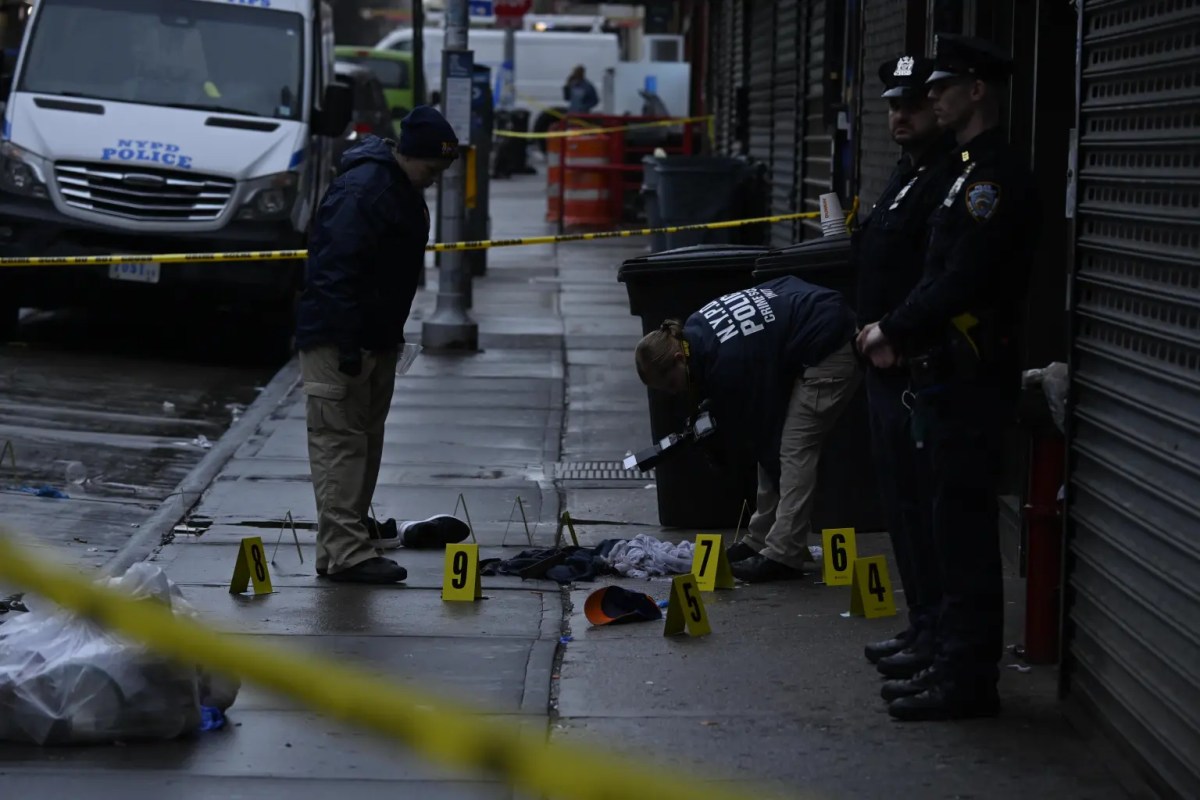The right to birth control in the United States was born 100 years ago in Brownsville, Brooklyn.
The opening of a clinic sparked a reproductive rights war that continues today, with many of its important battles fought in New York City courts and on its sidewalks.
Here is a look back at just a few of the important dates in the history of the birth control movement led by feminist, nurse, journalist and social justice crusader Margaret Higgins Sanger Slee and the organizations she founded in NYC that eventually became Planned Parenthood.
1916
On Oct. 16, 1916, Margaret Sanger opens the nation’s first birth control clinic at 46 Amboy St. in Brownsville with her sister, Ethel Byrne, also a nurse, and Fania Mindell, a feminist born in Russia, who translated for Yiddish-speaking patients. The clinic didn’t provide medical care, but offered desperate, impoverished women — most of them immigrants — education on the crude array of methods available to reduce the risk of unwanted pregnancies. Options included condoms made of rubber and “skin gut tissues,” pessaries, sponges, vaginal suppositories and douches made from dilutions of vinegar, salt, germicides and cleansers. Women lined up by the hundreds, many towing baby carriages and toddlers, paying 10 cents to register.
Police raided and shuttered the clinic 10 days later, arresting the trio on Oct. 26 for violating a state law inspired by The Comstock Laws — 1870s legislation named for a Christian salesman who convinced Congress to outlaw the advertising, promotion or transport of contraceptives in the belief they promoted promiscuity and vice.
Sanger got out of jail, reopened the clinic on Nov. 14 and was arrested again — this time for creating a public nuisance. She reopened it again on Nov. 16. Officials strong-armed her landlord into evicting the clinic, finally closing it.
1917
Sanger went to trial in January and was eventually convicted of violating a state law prohibiting the sale, distribution or promotion of “indecent articles.” She refused a suspended sentence offered on the condition she never again open a clinic, choosing instead to spend 30 days in the Queens County Penitentiary. She also appealed. Her sister, Ethel Byrne, went on a hunger strike in prison, was subjected to force feeding and almost died before being released. Mindell had her conviction for “distributing obscene materials” overturned in 1920.)
1918
New York Court of Appeals Judge Frederick Crane upholds Sanger’s conviction, but rules that physicians could dispense medically indicated birth control information. His ruling opened a loophole that Sanger exploited.
1921
Sanger establishes the American Birth Control League at 104 Fifth Ave. in Manhattan with the aim of making sure children are “conceived in love, born of the mother’s conscious desire and only begotten under conditions which render possible the heritage of health.”
1923
Sanger opens the Birth Control Clinical Research Bureau at 17 W. 16th St. in Greenwich Village, the first legal clinic in the country, run by a female physician, Dr. Hannah Stone, who not only dispensed contraceptives, but also collected data as to their efficacy.
1929
At the urging of the Catholic Church, the BCCRB is raided by police, who not only arrest staff members, but also confiscated patient records. “That gets the American Medical Association all het up,” and many physicians across the country began supporting Sanger’s crusade, said Esther Katz, director and editor of the Margaret Sanger Papers Project.
1930
Sanger opens a family-planning clinic in Harlem with the endorsement of local clergy, the Urban League and W.E.B. Dubois.
1932
Unable to get politicians on board for legislative reforms, Sanger focused on obtaining favorable court rulings. She directed Dr. Stone to order a new type of diaphragm from Japan. The package addressed to the physician was — predictably — confiscated by U.S. Customs.
1936
In his “one package” ruling, U.S. Second Circuit Court of Appeals Judge Augustus Noble Hand declares that the intention of the 1873 Comstock Act “was not to prevent the importation, sale, or carriage by mail of things which might intelligently be employed by conscientious and competent physicians for the purpose of saving life or promoting the well-being of their patients.” The decision solidified the role of physicians in dispensing birth control.
It was also in 1936 that Sanger had an article, “Does the Public Want Birth Control?” published that recounted her treatment of a poor married mother of three who had “used some instrument upon herself,” to abort, almost dying. “Mrs. Doe” begged her doctor for a means to stop having babies. “You can’t have your cake and eat it too,” he tsk-tsked, suggesting that Mrs. Doe tell her husband to sleep on the roof. Sanger was summoned after “Mrs. Doe” became pregnant again. “She died 10 minutes after I arrived,” wrote Sanger, indicating the cause of death was another illegal abortion.
Sanger did not oppose safe, legal abortion, but in guaranteeing everywoman access to reliable contraception, “she wanted to make it irrelevant,” Katz said.
1937
The American Medical Association recognizes birth control as an essential health service.
1942
The BCCRB and American Birth Control League, which merged in 1938, were rebranded, becoming The Planned Parenthood Federation of America. “Sanger hated the name,” noted Katz.
1960
The first birth control pill is approved by the Food and Drug Administration. Sanger had always dreamed of “a magic pill” to spare women the hassle of more cumbersome contraception, Katz noted. Sanger was instrumental in its development, as she funneled money from the feminist philanthropist Katharine Dexter McCormick to physicians and scientists who developed it.
1965
After a Planned Parenthood director and physician were arrested and fined in Connecticut under an 1879 law prohibiting the use or distribution of contraception, their case landed in the U.S. Supreme Court. In Griswold v. Connecticut, the Court ruled 7-2 that the law violated “the right to marital privacy.”
1972
The U.S. Supreme Court rules in Eisenstadt v. Baird that unmarried people have the same right to possess contraception as married people.
2016
Today, Planned Parenthood of NYC — one of 57 affiliates nationwide, treats 64,000 people a year and provides education and training to another 25,000.
(This timeline was assembled with the assistance of Planned Parenthood of NYC and Esther Katz, editor and director of The Margaret Sanger Papers Project.)

















